- europages
- >
- COMPANIES - SUPPLIERS - SERVICE PROVIDERS
- >
- simulators
Results for
Simulators - Import export
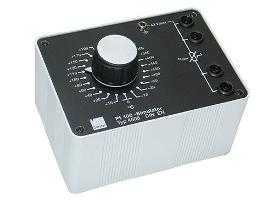
BURSTER PRÄZISIONSMESSTECHNIK GMBH & CO KG
Germany
The precision Pt100 simulator is used wherever measuring instruments or controlling systems have to be tested or calibrated with great precision. The standard version model 4506 simulates 24 set temperature values. Totally different temperature ranges are required in the case of special applications, such as in the food industry, the medical science etc. Model 4506 S is recommended for these applications and can be fitted with 24 temperature values according to customer specifications. A distinctive feature of these simulators is their simple operation. The resistance values required for simulation are directly set in °C. There is no need to use loof-up tables. Today in many cases a certificate is needed more than ever force measurements. This certificate is available under order code 45DKD-.. . Features: 24 set temperature values Calibration per DIN EN 60751 Resistor material: MANGANIN®, TK ≤ 10 ppm/K Pt100, Pt500, Pt1000 Available with DKD Certificate if required
Request for a quote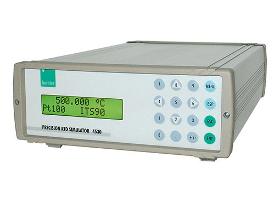
BURSTER PRÄZISIONSMESSTECHNIK GMBH & CO KG
Germany
The precision RTD simulator is used where measuring instruments or controlling means with high precision must be examined or calibrated. The simulator is suitable for calibration laboratory and service centers which need a computer-controlled resistance decade for the automation of calibration procedures. All standard platinum and nickel RTD can be simulated with very high accuracy according to scales ITS 90 or IPTS 68. Temperature regulators, transducers etc. often supply a pulsed signal current in order to reduce the self-heating of the RTD. Devices with electronic simulation of RTD are therefore inclined to swinging and do not function with this application. Features: — Simulation of Pt100, Pt200, Pt500, Pt1000, Ni100 and Ni1000 sensors — Accuracy 0.02 °C — Temperature scales ITS 90, IPTS 68 — Real Ohm simulation — Control manually or remotely via RS232/IEEE488/USB Converter
Request for a quote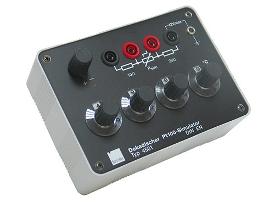
BURSTER PRÄZISIONSMESSTECHNIK GMBH & CO KG
Germany
Wherever temperatures are measured, temperatures must also be simulated. The Pt100-simulator is suitable for a wide area of applications. It has a wide range of simulation, which is resolved in 0.1 °C steps and makes many assignments in chemistry-, measuring-, controlling-, medicine and household applications, food industry, vehicle construction, air- and space travel and power plants easy to solve. Often in the past several simulators had to be used alongside to achieve either resolution or the range of the relevant application. As an extra advantage to the user temperatures can be entered in degrees celsius. Additional extensive conversions and readings in tabulation sheets are no longer necessary. Features: — Simulation range -100 °C up to +500 °C — Resolution 0.1 °C — Calibration in accordance to DIN EN 60751 — Simulation of line resistance 10 Ω, 20 Ω or 30 Ω — Sturdy aluminium-housing
Request for a quote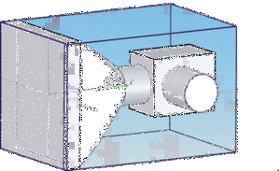
THERMOTEC PRODUKTIONSGESELLSCHAFT MBH
Germany
THERMO-GAS Heat Exchangers work optimally if the constant flow of gasses into the heat exchanger is guaranteed. In case of unfavourable assembly conditions, we have made tests and measurements so far in order to optimise stream conditions. Due to the increased requirements on the performance of heat exchangers as well as expanded application areas it has become necessary to achieve optimised results already in the planning phase. This is done by means of a CAD-based simulation which enables the very exact predicition of stream conditions. The performance opportunities of our heat exchangers are used at the best as a result of appropriate installed equipement for flow duct. We would be pleased to provide you with our knowledge also beyond the heat exchanger technology. The precise project In case of a plant for catalytic combustion, the connecting hood to the heat exchanger was significantly shortened due to the assembly of a THERMO-AWT 3-Way Stop valve. After this
Request for a quote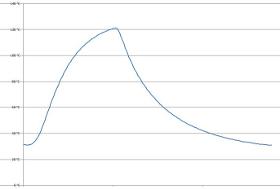
PRÜFREX INNOVATIVE POWER PRODUCTS GMBH
Germany
Alongside the standard ICT/FCT process, we can also target every individual production stage for verification, as requested. Efficient inspection strategies and final functional tests are a fixed component of our quality management system. In our test laboratory, we are able to carry out static and cyclical environmental simulation for you, from air-to-air and liquid-to-liquid thermal shock tests to storage temperature and humidity tests. Based on the environment in which the product is to be deployed, we will draw up a tailor-made quality assurance programme. Through simulation of the conditions that cause ageing (e.g. large temperature fluctuations) we can ensure that the product will reach the required service life. Products are also subjected to further customer-specific tests in fields such as EMC, overload resistance and mechanical loading.
Request for a quote
SUVIS GMBH
Germany
A further area of activity of Suvis is the development and application of modern numerical methods for the calculation (prediction) of flows using CFD in industry, science etc. Our employees are especially trained in view of technical applications of numerical flow simulations. Within the recent years we conducted several projects in the area of multiphase flows. We dealt with applications in the optimisation of processes in chemical engineering, the transport of particles, gas cleaning and particle separation from gases and liquids, and the calculation and optimisation of cyclone separators. We apply powerful commercial software tools like grid generators in order to generate numerical grids using CADdata in a short time for even complex applications. Also, for flow calculations and the evaluation of 3D flow fields we apply powerful software solutions. Furthermore, for certain individual problems we apply codes we have developed our selves.
Request for a quote
SUVIS GMBH
Germany
The Suvis GmbH also deals with the application of modern numerical methods for the lay out and optimisation of various separator types like cyclones. A typical application of these computation methods is the computer aided investigation of particle separation from gases in cyclones. The prediction of the separation efficiency allows the reliable optimisation of conventional cyclones and the development of completely novel high efficiency cyclones. With that, very often expensive filter units, wet cleaner, or costly electro filters can be replaced or completed. When applying numerical methods (CFD simulations) to cyclones one encounters the problem of strong curvature of the stream lines because of the resulting strong swirl flow and the abrupt change of flow direction towards the outlet tube. This means that the assumption of isotropic turbulence is not useful anymore.
Request for a quote
ATLAS MATERIAL TESTING TECHNOLOGY GMBH
Germany
Degradation and Heat Sunlight can have adverse affects on materials and components, oftentimes initiating and accelerating the degradation process as it interacts with temperature, moisture and other environmental effects. In addition, it is critical to understand the effects of heat created by sunlight with respect to operational performance, thermal management, noise and dimensional stability. A new product should be tested under solar environmental conditions representative of those locations in which it will exist - anywhere ranging from the heat of the outback in Australia to the frigid climate of arctic areas. Atlas solar simulation systems are custom-designed in both power and size. Having this flexibility, they can be integrated into various types of environmental test chambers whether they be small or walk-in, chambers used in component/ small product testing or drive-in chambers for complete vehicle testing, even up to extra large systems for trains, trucks and aircrafts. Superior Solar Simulation with SolarConstant A key to the success of solar environmental testing is the quality of the solar simulation itself. A close spectral match to natural sunlight is critical for accurate reproduction of test conditions. The Atlas SolarConstant luminaire offers high irradiance efficiency and superior spatial uniformity on the test area. Combined with special Metal Halide Global (MHG) lamps and optical filters, the SolarConstant creates a spectral distribution that closely matches natural sunlight. Its proven modular design makes this unit ideal for large custom-designed solar simulators as well as smaller standardized laboratory test systems. SolarConstant Serving Global Testing Needs SolarConstant products are designed to meet a large number of standards as well as industry test methods such as DIN 75220, MIL-STD-810, IEC 61215, IEC 904-9, EPA 40-CFR/ SC03, BMW PR306.5, Renault 32-00-022, Telcordia GR-487-CORE and others. Atlas offers a complete series of SolarConstant luminaires to satisfy an array of global testing needs: SolarConstant MHG 4000/2500/1200/575: These luminaires utilize Metal Halide Global technology for full-spectrum solar simulation. Optical filters adjust the output for the best match to natural indoor/outdoor sunlight. They are ideal for solar simulators used to determine thermal heating effects of solar radiation such as fit and finish, dimensional stability or thermal transmission. They are also suited for identifying photodegradation effects of polymers and coatings such as cracking, color fading and other failures, or testing PV module performance. SolarConstant MIL: These luminaires utilize Metal Halide Global technology combined with a unique "multi-level" output for full-spectrum solar simulation. Especially useful for satisfying stringent MIL-STD-810G method 505.5 (Procedure I) - determination of heat produced by 24-hour cycles of solar radiation. It is also ideal for agro-science requiring diurnal cycles, e.g. plant growth studies and others. SolarConstant MH 1500/1200/1000: These luminaires utilize Metal Halide technology for specific high-UV level testing or to meet limited budget applications. Solar Constant UV 2000: These luminaires utilize Mercury technology for creating UV radiation (280 - 400 nm) and are used to study photo-aging effects caused by solar UV radiation only. In addition to the SolarConstant line of products, Atlas comolements its luminaire portfolio with Halogen technology for visible (VIS) and heat radiation (IR). IR-luminaires with 2000W / 1500 W are used to set up high-performance systems for testing heating effects similar to heating caused by sunligt. In addition to the SolarConstant line of products, Atlas comolements its luminaire portfolio with Halogen technology for visible (VIS) and heat radiation (IR). IR-luminaires with 2000W / 1500 W are used to set up high-performance systems for testing heating effects similar to heating caused by sunligt. From Outdoor Data to Laboratory Testing No environmental laboratory test is complete withut the confirmation and correlation to natural conditions. Atlas operates a number of outdoor exposure sites in key climate zones worldwide and can produce the natural exposure data you need. Using our expertise in both outdoor and accelerated testing, Atlas can assist you in reproducing outdoor conditions in your laboratory enabling your testing to reliable, fast and as realistic as possible. Test Chamber Examples Atlas has installed over 100 systems worldwide and is a leader in combining the technologies of testing with solar simulation. Below are examples of the most common test chambers with solar simulators: Climate test chamber with wind tunnel and solar simulator Climate test chamber with dynamometer and solar simulator Solar heat load test chamber with solar day cycling Climate test chamber with dynamic road simulation and solar simulator Custom solar simulator for PV module testing, Light Soak testing, I/V curve tracing Solar environmental Walk-in test chamber for component / product testing Atlas CESORA Atlas' CESORA (Calculation of Effective Solar radiation) software is extremely useful in the absence of measured outdoor data. With CESORA, you can calculate effective solar radiation for any time, day, month or year on any titled surface over any spectral range from 250-3000 nm. Positioning System To allow the SolarConstant solar simulator to move and replicate various natural solar conditions, a mechanical positioning system is typically installed. This enables motorized movement of the solar array within all desired spatial directions to simulate solar day cycles for example. Atlas offers both low-cost manual remote controls or full automatic alternatives that are integrated into the Atlas software. Positioning systems are typically customized towards the application and local test facility. Atlas will work with you to define the SolarConstant positioning system that will work best for you. Control System The operation of the SolarConstant system is handled by a dedicated operator interface. Atlas provides tailored menu-driven software for the programming and operation of each solar simulation system. Any solar simulation profile - for example morning, noon, afternoon, etc. can be stored and combined with various types of programmed test sequences for a complete integrated test program. For seamless operator interface, the Atlas designed solar control interface can be linked to the master IT environment of the test facility. We believe that a strong grasp of our customers' requirements is a key factor in developing a solution tailored to their needs. In order to simplify initial communications and understand your requirements more easily, please fill out the provided questionnaire under 'Downloads' and fax it back to +49-6105-9128-80.
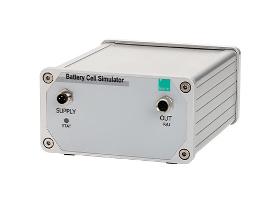
BURSTER PRÄZISIONSMESSTECHNIK GMBH & CO KG
Germany
The Battery Cell Simulator serves to test Battery Measuring Modules in the 2511 series, which are used in battery module assembly applications (incoming goods inspection, BoL, EoL). The Battery Cell Simulator is able to emulate battery cells of different technologies with resistance and open circuit voltage simulation. The resistance simulation replicates the purely ohmic resistance of a cell. The Battery Cell Simulator runs on 24 V DC. The LED on the front indicates the different operating states. Resistance and voltage values can be defined from standard values or from a custom set of values.
Request for a quote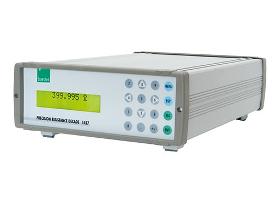
BURSTER PRÄZISIONSMESSTECHNIK GMBH & CO KG
Germany
In its function as temperature simulator the decade offers the choice of sensors like Pt100, Pt200, Pt500, Pt1000, Ni 100 and Ni 1000 in the range from -200 °C up to +850 °C. The temperature is entered via keyboard or data interface. The corresponding resistance appears at the output socket in two, three or four wire method. The resistance decade allows a direct choice of resistances between 1 Ω and 1.2 MΩ. Depending on the ohm value the resolution can be chosen up to 0.00001 Ω. The selected resistance can be picked up via two or four wire method. The LCD display informs about chosen resistance or temperature, sensor type and control status. Features: — Resistance range from 1.00000 Ω to 1.200000 MΩ — Accuracy 0.005 % — Temperature coefficient < 1 ppm/K — Simulation of RTD (Pt, Ni) temperature sensors — Simulation accuracy 0.02 °C — 2, 3, 4 wire connection — USB/RS232 (IEEE488/Ethernet optionally)
Request for a quote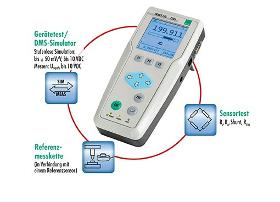
BURSTER PRÄZISIONSMESSTECHNIK GMBH & CO KG
Germany
The multipurpose digital indicator TRANS CAL 7281 can be used wherever there is a need to perform high-precision, in-situ calibrations of sensing components used in equipment such as presses, torque tools or pressure-regulating systems. An optional factory calibration certificate or German-accredited DKD/DAkkS calibration certificate can be provided when the measurement device needs to be used as a reference. This provides a quick and cost-effective way of assessing a system with traceable documentation of measurement results. If a reference measurement cannot be made because the sensor location is difficult to access, it is still possible to test the zero point, the input, output and isolation resistance as well as the calibrating offset of the fitted sensor. It is also possible to check the indicating device by measuring the excitation voltage and simulating the characteristic values (mV/V or V) of the sensor used.
Request for a quote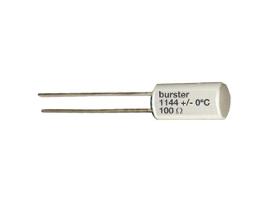
BURSTER PRÄZISIONSMESSTECHNIK GMBH & CO KG
Germany
Today resistance thermometers are one of the important precision and operating measurement instruments of technical temperature measurement. Fast and easy testing of display, control and recording devices in measurement and process engineering is essential. Fixed temperature values can easily be simulated according to the characteristic curves of Pt100, Pt500 and Pt1000 using the precision resistors calibrated in °C (the inscription also includes the resistance value in Ω). The small dimensions of the resistors allow the installation in measuring instruments or measuring circuits for comparison or control measurements. Features: — TK ≤ 10 ppm/K — More than 60 fixed temperature values from -200 °C ... +800 °C ex stock — Calibration in acc. with DIN EN 60751 n - 0.02 % tolerance for the models 1144-Pt 100, 1144-Pt 500 and 1144-Pt 1000 — ± 0.05 % tolerance for model 1146-Pt100 — Resistance material MANGANIN®
Request for a quote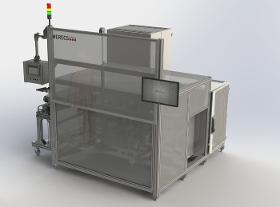
MERECS ENGINEERING GMBH
Germany
EOL test stand for e-charging columns and their power electronics for the simulation of different electrical loads and mains fluctuations. The test stand has automatic contacting and achieves high test throughputs in end-of-line operation. Different variants of the power electronics of electric charging columns can be tested. On the software side, Merecs Engineering relies on NI-LabVIEW and NI-TestStand.
Request for a quote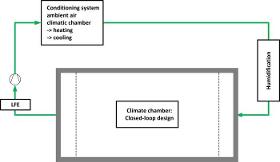
EP EHRLER PRÜFTECHNIK ENGINEERING GMBH
Germany
with adjustable humidity and temperature to simulate the environmental conditions of a test specimen (e.g. household appliances, heating technology) The basis is a standard or climatic chamber (e.g. test kitchen, environmental simulation) with adjustable air humidity and temperature. On the basis of decades of experience in automotive test engineering, EP-E developed a concept in which the air flows in a circle (loop design). The result is a very excellent homogeneous temperature and humidity distribution. Through precise temperature and humidity control, it is possible to set different combinations of air conditioning and thus precisely adjust the required test conditions. The determination of the air flow (exhaust air volume) is carried out via a measuring section with the use of Laminar Flow Elements (LFEs). In order to determine the volume flow, pressure and temperature sensors are used to determine the air volume flow of the climatic chamber(s).
Request for a quote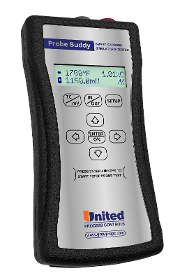
UNITED PROCESS CONTROLS GMBH
Germany
Probe Buddy™ is a smart testing device that checks the integrity and health of an oxygen probe from United Process Controls and from other manufacturers. It’s also used to imitate the output signals of a working probe to check the scaling and operation of the process control system. FEATURES & BENEFITS • Troubleshoot problems with your probe and control system • Assess the probe’s usability and performance • Verify controller’s input performance • Eliminate unneeded replacement of non-defective probes • Hand-held device operates as a probe test meter and a probe signal simulator • Enables non-expert to perform probe troubleshooting procedures like an expert • Accepts selectable TC and mV inputs from any oxygen probe • Outputs selectable TC and mV signals to simulate an oxygen probePerforms a probe impedance test when connected to a probe • Computes carbon, dewpoint or oxygen in input or output mode • Specific probe connection cables available, no hard wiring required
Request for a quote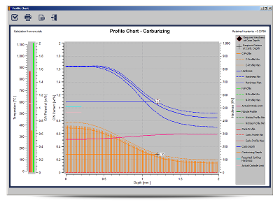
UNITED PROCESS CONTROLS GMBH
Germany
HT-Tools Pro is a powerful simulation tool for designing and optimizing recipes for carburizing including low-pressure carburizing, carbonitriding, as well as nitriding and nitrocarburizing processes. It can significantly reduce the lead time for process development, replacing time-consuming evaluations and trials.
Request for a quote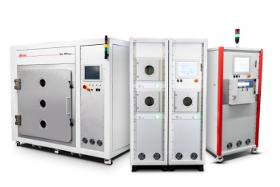
DIENER ELECTRONIC GMBH & CO. KG
Germany
Vacuum degassing / outgassing With the aid of vacuum outgassing, unpleasant tastes or odors can be degassed and thus rendered tasteless. Altitude simulation For aircraft transport, it is essential to perform tests and simulations at a pressure <800 mbar, since in cargo holds, pressure equalization takes place, but cannot compensate for all fluctuations. Vacuum storage systems The safest way to store highly sensitive components is under vacuum. Under the vacuum environment, your components are protected from all external influences. Control and process control Our specially developed control program offers not only the possibility to monitor, but also to program and store various process sequences. High and ultra-high vacuum From the pressure range of rough vacuum to fine vacuum and ultra-high vacuum, we are able to meet your process requirements with our systems.
Request for a quoteDo you sell or make similar products?
Sign up to europages and have your products listed
Results for
Simulators - Import exportNumber of results
18 ProductsCountries
Company type
Category
- Calibration equipment (5)
- Elements, electric (2)
- Electrical & Electronic Components (1)
- Gas filters (1)
- High-vacuum photo-cells (1)
- Hot-air generators (1)
- Measurement and control instruments (1)
- Measurement and regulation equipment and instruments - electricity and other energy (1)
- Measurement and regulation equipment and instruments - output and flow (1)
- Resistors (1)